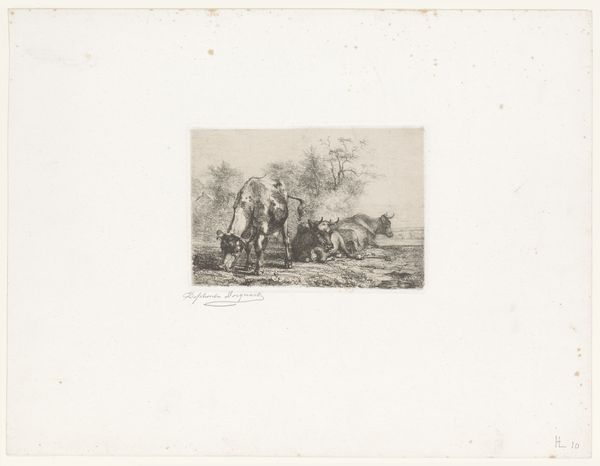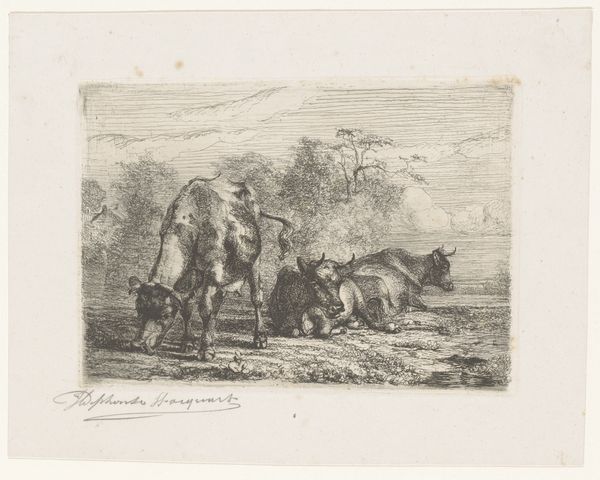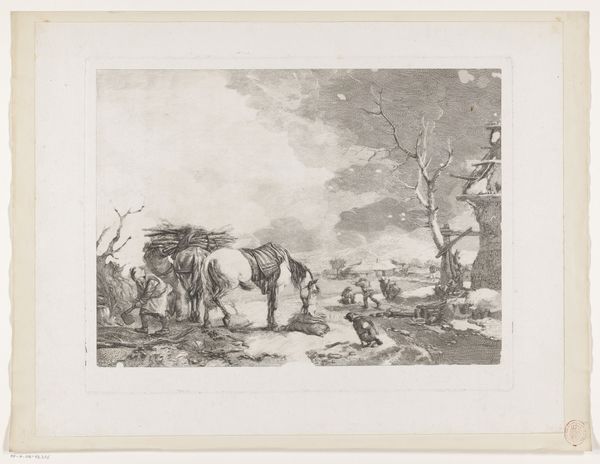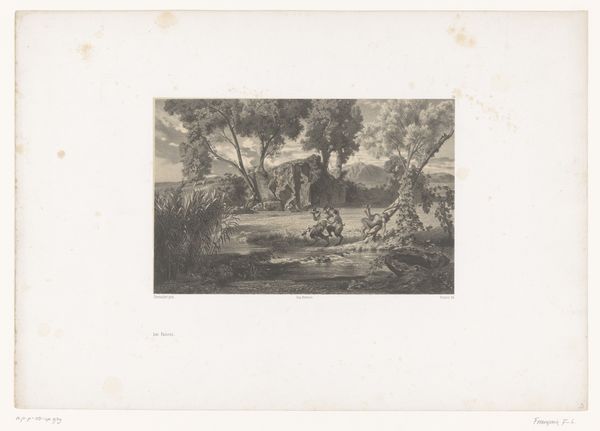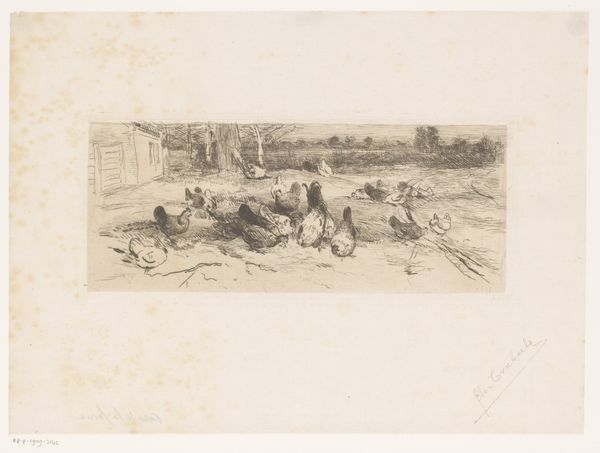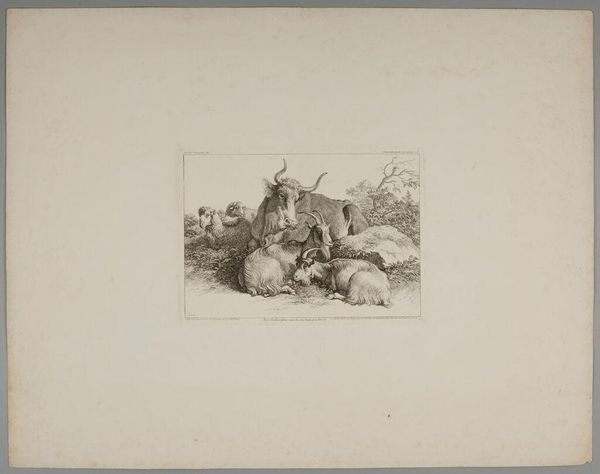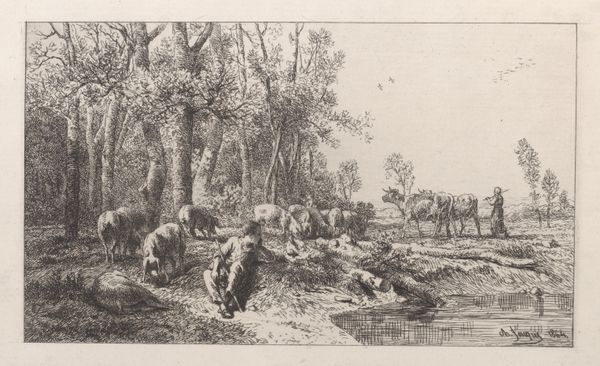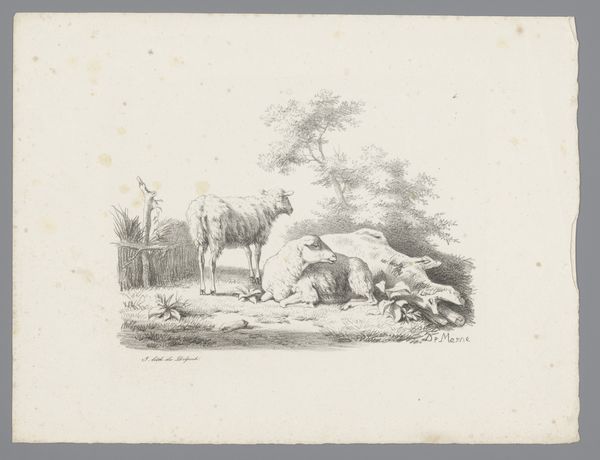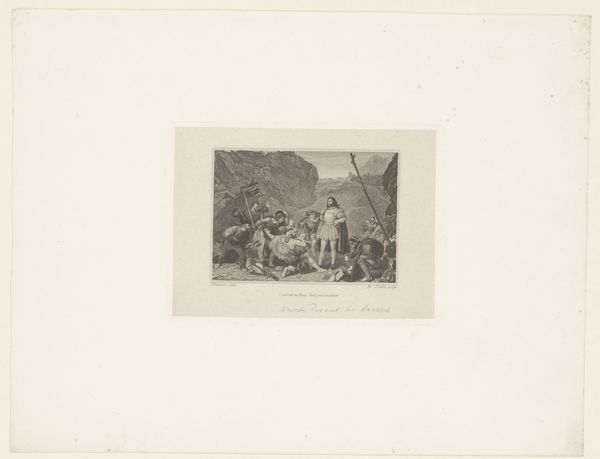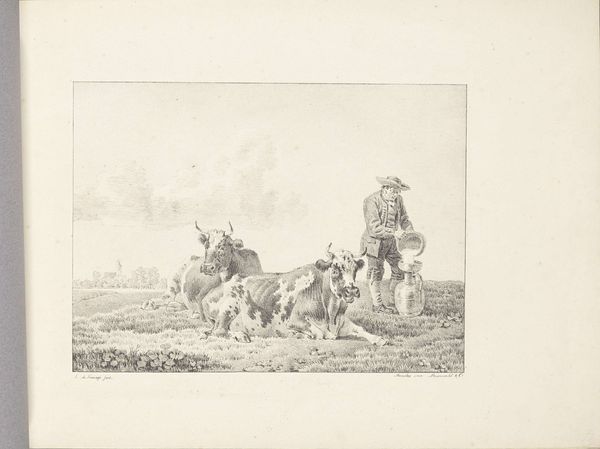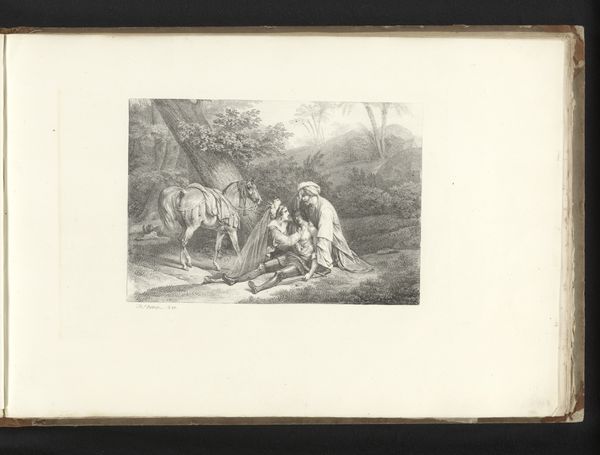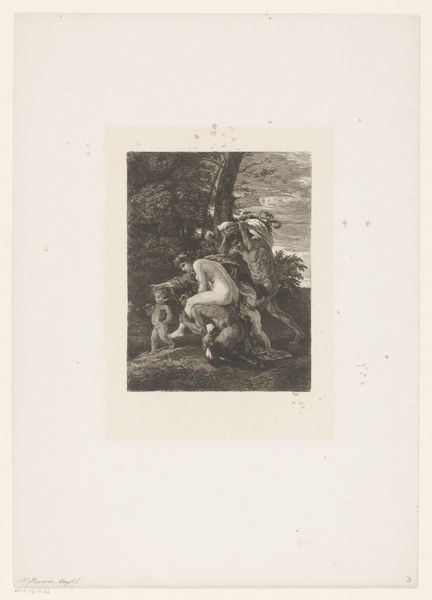
print, etching
#
animal
#
dutch-golden-age
# print
#
etching
#
landscape
#
genre-painting
#
realism
Dimensions: height 242 mm, width 335 mm
Copyright: Rijks Museum: Open Domain
Curator: Soothing, isn’t it? Almost pastoral. There’s a gentle contentment radiating from these cows, sprawled in their field. Editor: Indeed. We are looking at “Three Cows in a Meadow near a Fence,” an etching by Pieter de Goeje. The dating is approximate, placing its creation sometime between 1809 and 1859. Note the etcher's precise application of lines—quite meticulous in the representation of bovine form and the texture of the land. Curator: Meticulous, yes, but I find something… vulnerable in their stillness. Like they are confessing secrets to the grass. You know? Like a little black and white confession. Editor: Well, in this era, the rise of agricultural societies had a big impact on subject matter deemed paintable, profitable or…etchable. How daily life and nature are being consumed. These cows almost become symbols of a working agrarian society and all that accompanies it. Notice, also, the modest composition – foreground, middle ground, and background all meticulously defined, indicative of the printmaking conventions during that time. Curator: They seem more than just symbols. See the lazy turn of their heads, the weight of their bodies. Makes you almost nostalgic for afternoons you’ve never had. Editor: Right! Nostalgia. The materiality itself lends to that I would posit. Think of the process: etching requires laborious preparation of the metal plate. The image is scratched manually, then submerged in acid... Each step involved demands specific labor practices impacting the meaning embedded within. Curator: Okay, true, but still—you’re taking me out of the meadow! Maybe these Dutch cows represent material processes but there's a palpable soul. They speak of connection, like whispers between the animals and earth, you know, like…a bovine poem. Editor: Fair. From a consumer standpoint, works like this become democratized—multiple copies circulated more readily among the bourgeois, spreading agrarian values beyond farmland owners. So perhaps these works become not so much whispers, but an amplified pastoral message. Curator: Amplified, but the intimacy is still there! The simplicity... it touches something basic in me. Editor: And that is a critical piece to all artwork's creation, transmission and yes, its ultimate meaning. Curator: Couldn't agree more, so should we stroll onwards? The meadow awaits.
Comments
No comments
Be the first to comment and join the conversation on the ultimate creative platform.
